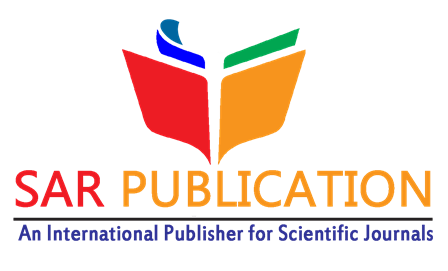‘Destroyed Lung’ as Post Tuberculosis Lung Disease: Does it Preventable or Evolved as a Natural Trend of Advanced Pulmonary Tuberculosis?
Shital Patil, Rajeshwari Pawar, Satyam Wande, Apurva Kelkar, Rudra Gaikwad, Gajanan Gondhali
SAR J Med | Pages : 64-72
DOI :
https://doi.org/10.36346/sarjm.2025.v06i05.002
Background: Pulmonary tuberculosis (TB) continues to be a major global health problem, with post-tuberculosis lung disease (PTLD) emerging as an underrecognized sequela. Among its various manifestations, “destroyed lung” represents a progressive, debilitating outcome characterized by irreversible structural damage, recurrent infections, and significant impairment of quality of life. Despite successful completion of anti-tuberculosis therapy (ATT), patients often suffer long-term pulmonary morbidity. This case series highlights two patients with advanced PTLD presenting as destroyed lung, emphasizing the natural history, diagnostic challenges, and therapeutic outcomes. Case Presentation: The first case involves a 48-year-old male with a history of delayed TB diagnosis for three years, during which he was empirically treated for pneumonia, typhoid, and jaundice by various practitioners. Eventually, he was diagnosed with pulmonary TB and treated for eight months at a government center, with treatment deemed successful. However, after eight years of treatment completion, he presented to our center with recurrent respiratory symptoms. Bronchoscopy revealed a necrotic mucosal lumen with suppurative secretions in the left main bronchus extending into both upper and lower divisions. The bronchial anatomy was markedly distorted with dilated, ectatic bronchi. Bronchoalveolar lavage (BAL) cultures demonstrated colonization with Pseudomonas aeruginosa and Klebsiella pneumoniae. BAL GeneXpert MTB/RIF was negative, excluding active TB. He was managed with meropenem, amikacin, nebulized bronchodilators, and supportive care, showing marked clinical improvement after 14 days. The second case is a 51-year-old male with a delayed diagnosis of TB for two years. He too had initially been misdiagnosed and treated empirically for non-specific febrile illnesses. Eventually, he completed one year of ATT at a government center and was declared cured. Ten years later, he presented with persistent and recurrent pulmonary symptoms. Bronchoscopic evaluation revealed necrotic mucosa with purulent secretions in the right main bronchus, involving upper, middle, and lower divisions. The bronchial tree was distorted with extensive ectatic changes. BAL culture grew Pseudomonas aeruginosa and Klebsiella pneumoniae, while GeneXpert MTB/RIF was negative. He was treated with the same regimen as the first case and demonstrated a favorable outcome after two weeks of therapy. Discussion: Both patients highlight the long-term sequelae of delayed TB diagnosis and management. Even after microbiological cure, chronic structural lung damage predisposed them to persistent colonization with pathogenic organisms, recurrent infections, and functional impairment. These cases underline that destroyed lung syndrome is largely preventable with early recognition of TB, timely initiation of ATT, and structured follow-up care. Importantly, both cases reinforce that post-tuberculosis sequelae require comprehensive management beyond TB treatment completion, integrating bronchodilator therapy, infection control, and long-term pulmonary rehabilitation. Conclusion: Destroyed lung as a PTLD manifestation represents the culmination of delayed diagnosis and chronic lung injury rather than treatment failure or reactivation. Early detection, timely treatment, and structured long-term surveillance could prevent this disabling outcome. These cases emphasize the urgent need for public health strategies addressing PTLD to reduce the burden of preventable chronic respiratory morbidity.
